The fundamental idea of quilting came to America with the first settlers, especially from northern countries, such as Holland and England, where women had quilted petticoats, jackets and bedcovers for extra warmth since medieval times. They even developed such elaborate and beautiful quilting patterns that sets of bed furnishing were often mentioned in wills. Certain patterns grew up in specific areas and became so easily recognizable as having originated in certain county or town.
When the first European settlers came to New England, they certainly brought a few quilted coverlets with them, and they soon had need of more. At first the quilts were mostly dark-coloured wools, but later more elegant ones were made of white linen or cotton, with fine white-work stitching in carefully planned designs, such as this bedcover:

As fabrics wore out, old garments were cut up and sewn together in patches and, when a big enough piece had been made of patches, it was quilted or simply tied through at intervals. Though the all-over stitched designs of white work were still made through the 19th century, patched or pieced quilts grew in popularity. The designs became more elaborate as the population moved west and became known as pieced quilts. Some patterns were named from the Bible, such as Jacob’s Ladder or Robing Peter to Pay Paul, others came from the pioneers’ daily life: Log cabin (with the fire represented in the centre of the block), Carpenter’s wheel, Little house or School, etc.

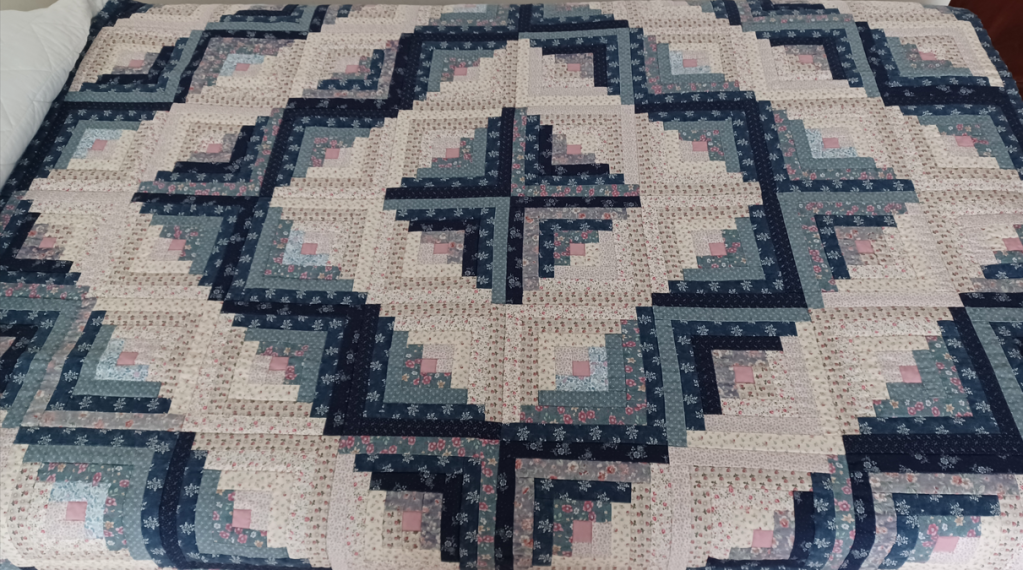
Out of frugality and necessity, the great American pieced quilt, their true folk art, was born with imagination and a sense of fun. At the same time in parts of the country where life was not quite so hard, appliquéd quilts made of delicate imported fabrics grew in favour. Wreath of roses and vines laden with grapes and huge baskets of flowers appeared, like in this Baltimore Album Quilt:
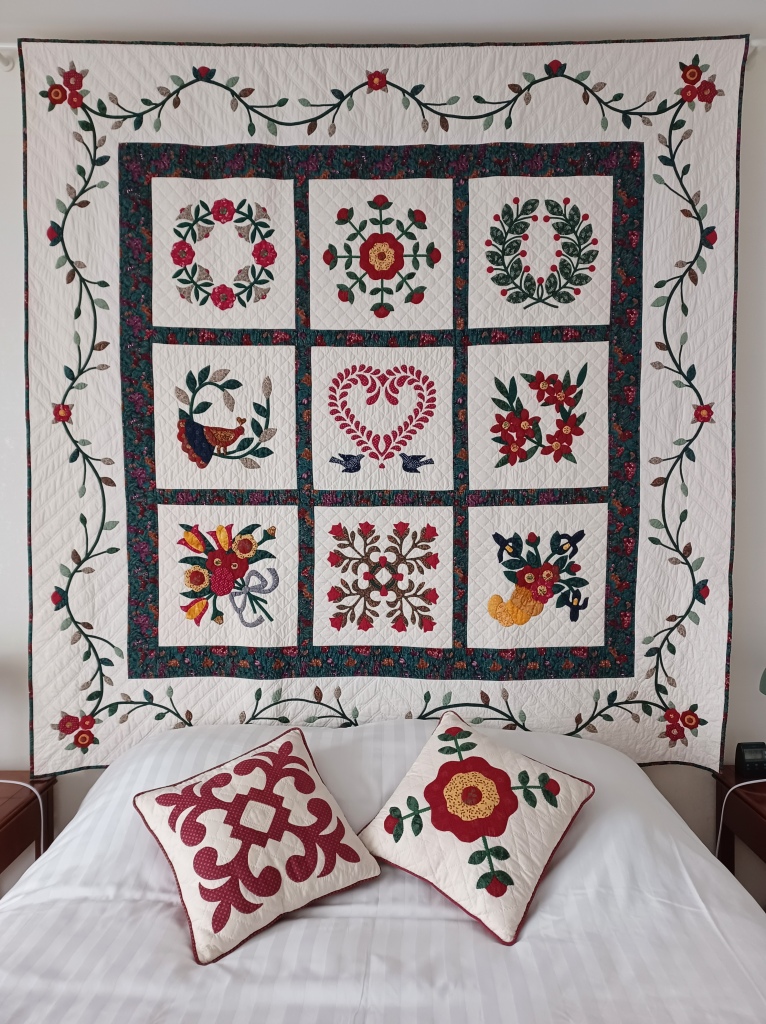
Indeed, some variations, in which each square was usually made by a different person, were known as Album quilts (made as presentation pieces for a local minister or doctor), Freedom quilts (for young men when they reached their 21st birthday), or Friendship quilts (made as engagement or wedding presents for young women). These communally made quilts are among the best-preserved examples of American quilting in museums and collections today because they were presentation pieces, and were admired rather than used. (Source: Carter Houck and Myron Miller, American Quilts and How to Make Them, 1975).
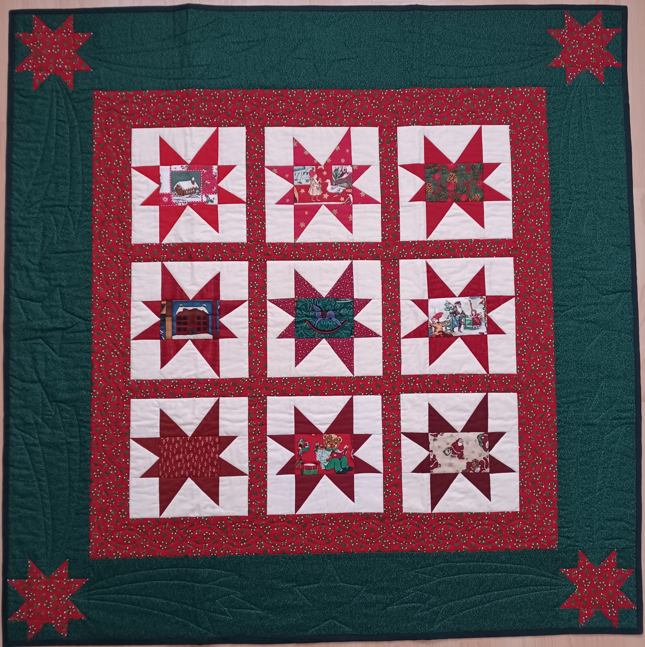
Bibliography:

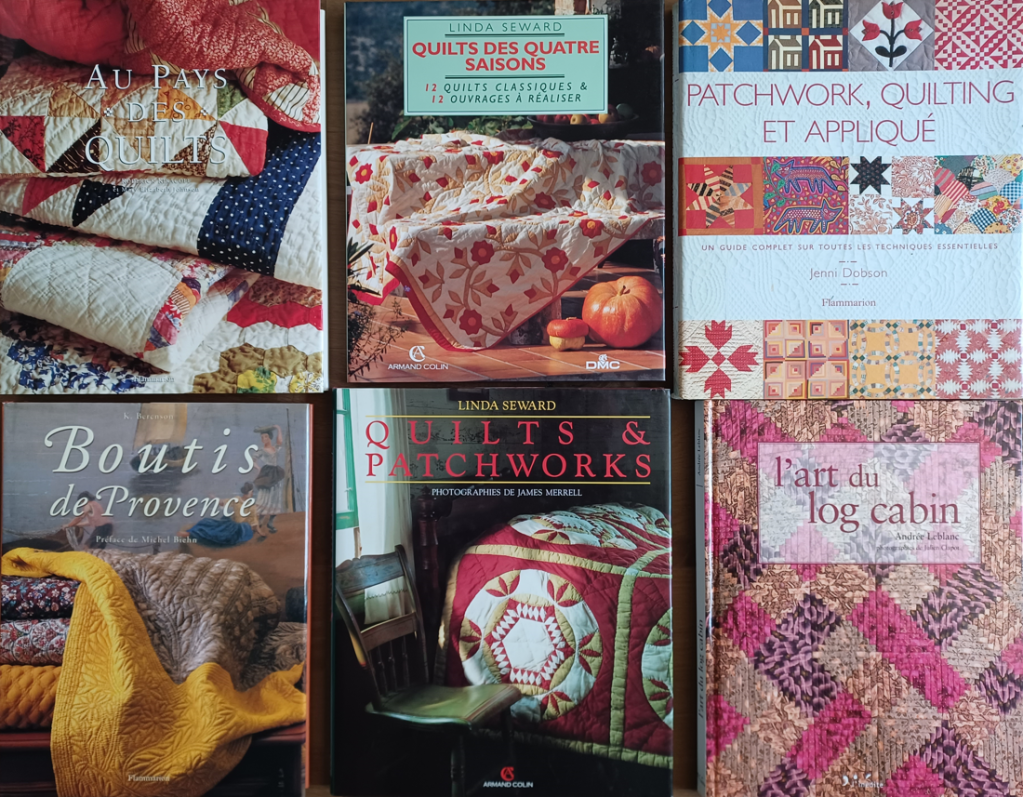
My story with patchwork quilts…
Ma passion for patchwork quilts really started in 1990: at that time, patchwork was not widely known in France, and Le Rouvray, in Paris, was THE reference for quilts makers, providing all type of materials and classes. It is closed now, but a webpage still exists: http://www.lerouvray.com/index.html. I thus enrolled in a first weekend programme in October 1990, during which I learned piecing and quilting techniques, and a year later, I attended a second one to learn the appliqué technique and quilting on a frame. Then I implemented what I had learned through several small projects, from cushions to baby bedcovers. When I discovered that I was skilled enough to use my newly acquired sewing machine for assembling the small pieces of fabrics together, I started bigger projects including curved pieces, such as Giant Dahlia throws and bedcovers, and wall-hangings. I also started to mix machine quilting “in the ditch” and decorative hand-quilting.

In September 1994, I launched a “Patchwork club” with a few colleagues from work and some colleagues’ partners. We met once a month. This club was not only a great source of inspiration and motivation, but also a welcoming space of expression and friendship, in the tradition of American “quilting bees”. We exchanged ideas, tips, magazines and books. When my son was born, the club members offered me the appliquéd top of a baby quilt, that I quilted with love during the following months:
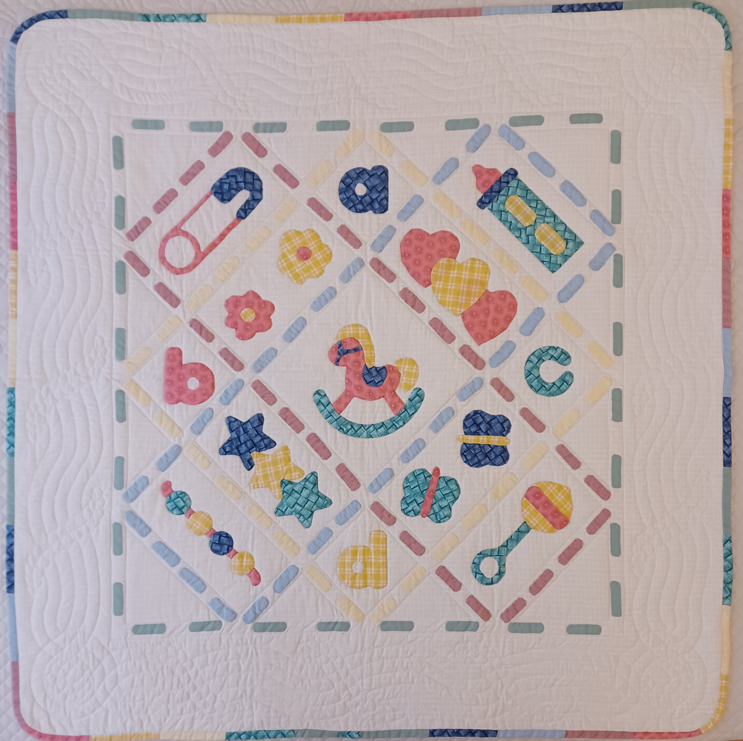
When I left Burgundy to join the European Institutions in Luxembourg, I knew that the club would continue to flourish, and I visited one of their exhibitions a few years later. Once we settled down in Moselle, I enrolled in the local branch of the national quilters’ association, France Patchwork: Accueil | France Patchwork. There I met another member, who has become one of my oldest friends. A former teacher in all types of needlework, she excelled in all techniques of patchwork quilts, and soon launched a local patchwork club that she managed for years. She made the white bedcover and the Baltimore Album Quilt on the photos above, as well as Autumn, this wall-hanging:
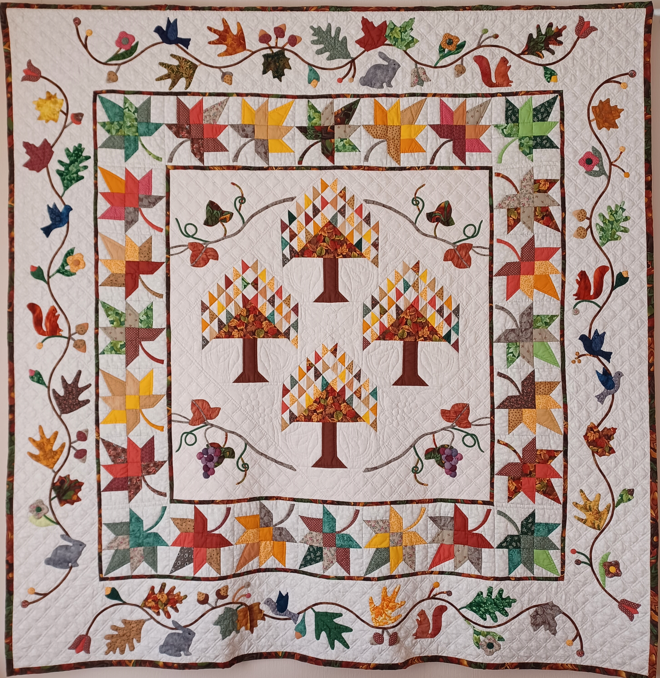
I went on creating quilts of various size and style for a few years, until I accepted a management position at work. I had then to rearrange my priorities and put my sewing machine and my collection of quilting fabrics aside until my retirement… But my interest in this folk art has never faded away, and I seized any opportunity to visit quilts museums and exhibitions, be it in Sainte-Marie aux Mines (FR), in York (UK) or in the Amish country, in Pennsylvania (US).

You must be logged in to post a comment.